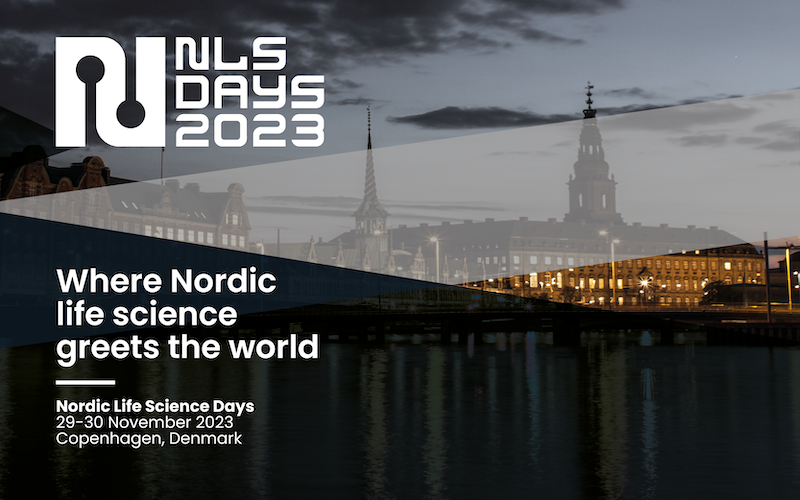- Market Info
Centre-Val de Loire: a land of opportunity for the health industry and medical progress!

On 23 November, the Danish pharmaceutical group Novo Nordisk announced an investment of more than €2.1 billion to double production at its Chartres plant. This investment is the largest ever announced in the French healthcare sector. As the Danish group has been based in Chartres since 1961, this long-term project confirms the potential and strengths of the Centre-Val de Loire region, particularly in the health industry.
Centre-Val de Loire has an attractive and well-established health industry ecosystem
The Centre-Val de Loire region has a robust and attractive healthcare sector. It employs over 13.000 people in the Region and gathers 110 industrial settlements, including 44 foreign companies’ sites (2021). In 2022, Centre-Val de Loire attracted the record number of 70 international investment projects, a 43% increase compared with 2021. A significant proportion of these FDI is carried out by companies in the healthcare sector, such as Novo Nordisk, Leopharma, Invacare or Merck. As a result, the Region represents 53% of the medicines produced in France and generates more than €3.7Bn in export revenue (2021). Furthermore, the Region is part of Polepharma, the first European pharmaceutical cluster and benefits from the work of Dev’up, the Regional Economic Development Agency.
The Region counts value chains that cover many fields of the medical industry
This strategic specialisation is at the crossroads of a wide range of industries (medicine, microtechnology, chemicals, plastics, mechanics, electronics, etc.). Thus, it covers many value chains and reveals the full extent of the know-how present in the Centre-Val de Loire region and its ability to innovate constantly. Nonetheless, the Region’s industrial base has more specifically developed its expertise in the fields of:
🧬Implantable medical devices (orthopaedic, ophthalmic, dental),
🏥 Hospital equipment (MRI, scanners, medical beds, incubators, etc.),
🩺 Medical measuring instruments (blood pressure monitors, audiometers, etc.)
Alongside major pharmaceutical groups such as those already mentioned, the Region also counts highly specialised companies such as AdEchoTech and Médipréma. The first created the world’s 1st remote ultrasound robot, and the second is the French leader in warming therapy and the treatment of jaundice.
Research and Development is at the core the Centre-Val de Loire strategy more medical progress
In the Region, companies are particularly dynamic in terms of innovation, and the sector benefits from significant financial support from local authorities for R&D. Thus, the attractiveness of the Region has been enhanced and is supported by a wide range of players. The Centre-Val de Loire region counts around sixty public and private research laboratories within the Universities of Orléans and Tours. They are both involved in research projects to develop new treatments and medicines like CLIMBIN, Oncotoxo, and Valbioscom.
Major national research institutions, such as INSA, CNRS, INRAE, BRGM, and CEA, have laboratories in Centre-Val de Loire. Many improvements have been made to foster R&D and academic papers and attract new prominent scientific actors. As a result of this strategy, a new INSERM laboratory is due to open soon in Orléans. Its research will focus on mRNA, a priority technology supported by the France 2030 strategic plan. It emphasises the importance of the Region and how it could contribute to reinforcing its health industry ecosystem.
A growing academic offer to attract and train the Talents for the future of the Health Industry
The Region can therefore count on these valuable assets, but not only that. It is banking on training talent to meet the needs of the Region’s businesses and strategic challenges. In 2019, Centre-Val de Loire spent €37.674 million to fund training in the social and paramedical sectors. This initiative ensured free tuition for the 7,000 student nurses, care assistants, masseurs, physiotherapists, psychomotor therapists, etc. Given the ageing population and the growing need for medical care, this strategy is necessary.
Around 10.000 students are currently enrolled in the health studies in the Region. Moreover, the whole student population has increased since 2018, more than the national average, especially in universities. Universities account for most of the students enrolled in higher education (69%), which is higher than the national average (62%).
In the Centre region, all the players involved in promoting the Region work hand in hand, seeking to understand the needs of businesses and looking to the long term.






